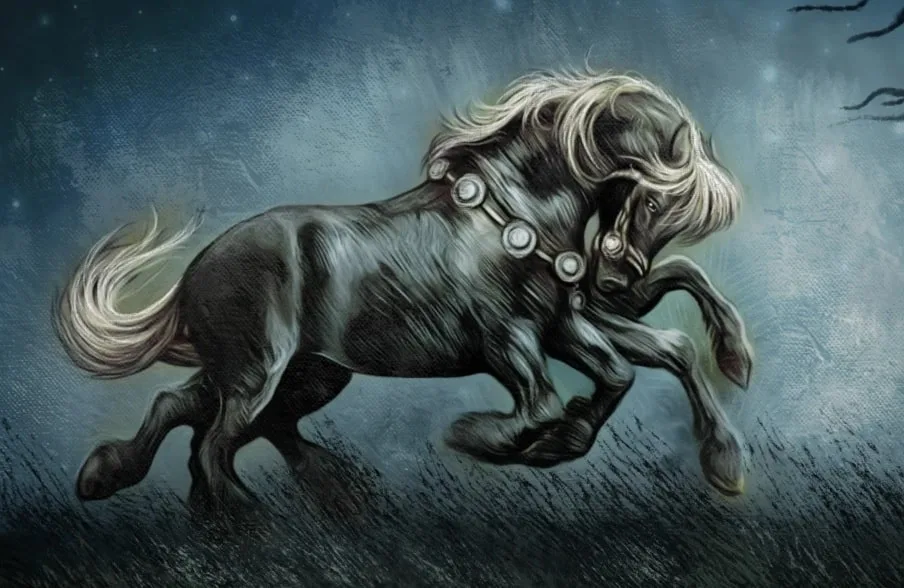
Scholarly theories have been proposed regarding Sleipnir's potential connection to shamanic practices among the Norse pagans. Sleipnir is generally accepted as depicted on two 8th century Gotlandic image stones: the Tjängvide image stone and the Ardre VIII image stone. Sleipnir is also mentioned in a riddle found in the 13th century legendary saga Hervarar saga ok Heiðreks, in the 13th-century legendary saga Völsunga saga as the ancestor of the horse Grani, and book I of Gesta Danorum, written in the 12th century by Saxo Grammaticus, contains an episode considered by many scholars to involve Sleipnir. The Prose Edda contains extended information regarding the circumstances of Sleipnir's birth, and details that he is grey in color. In both sources, Sleipnir is Odin's steed, is the child of Loki and Svaðilfari, is described as the best of all horses, and is sometimes ridden to the location of Hel.

Sleipnir is attested in the Poetic Edda, compiled in the 13th century from earlier traditional sources, and the Prose Edda, written in the 13th century by Snorri Sturluson. In Norse mythology, Sleipnir / ˈ s l eɪ p n ɪər/ ( Old Norse: "slippy" or "the slipper" ) is an eight-legged horse ridden by Odin.


Depiction of Sleipnir in a detail on the Tjängvide image stone.


 0 kommentar(er)
0 kommentar(er)
